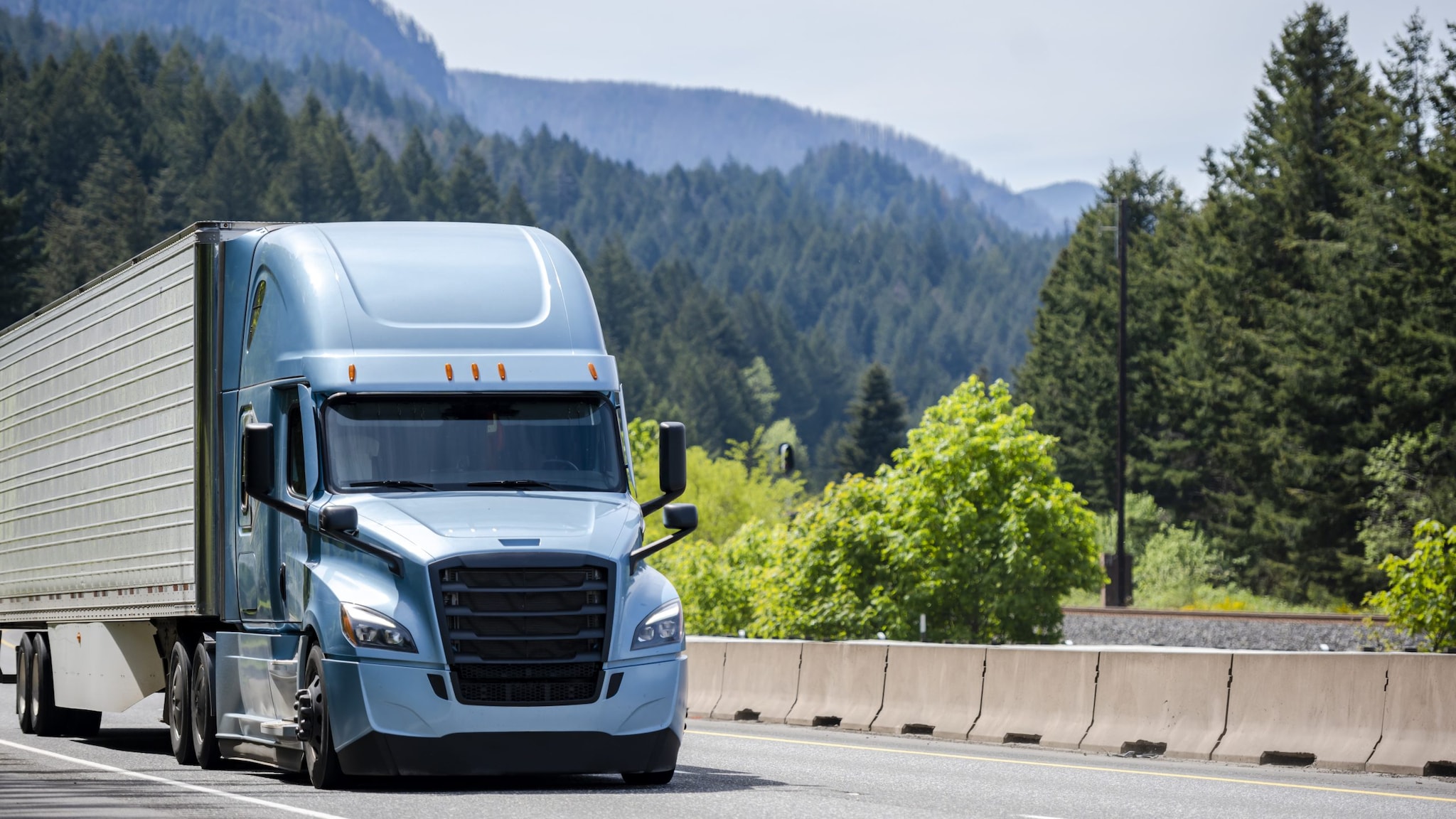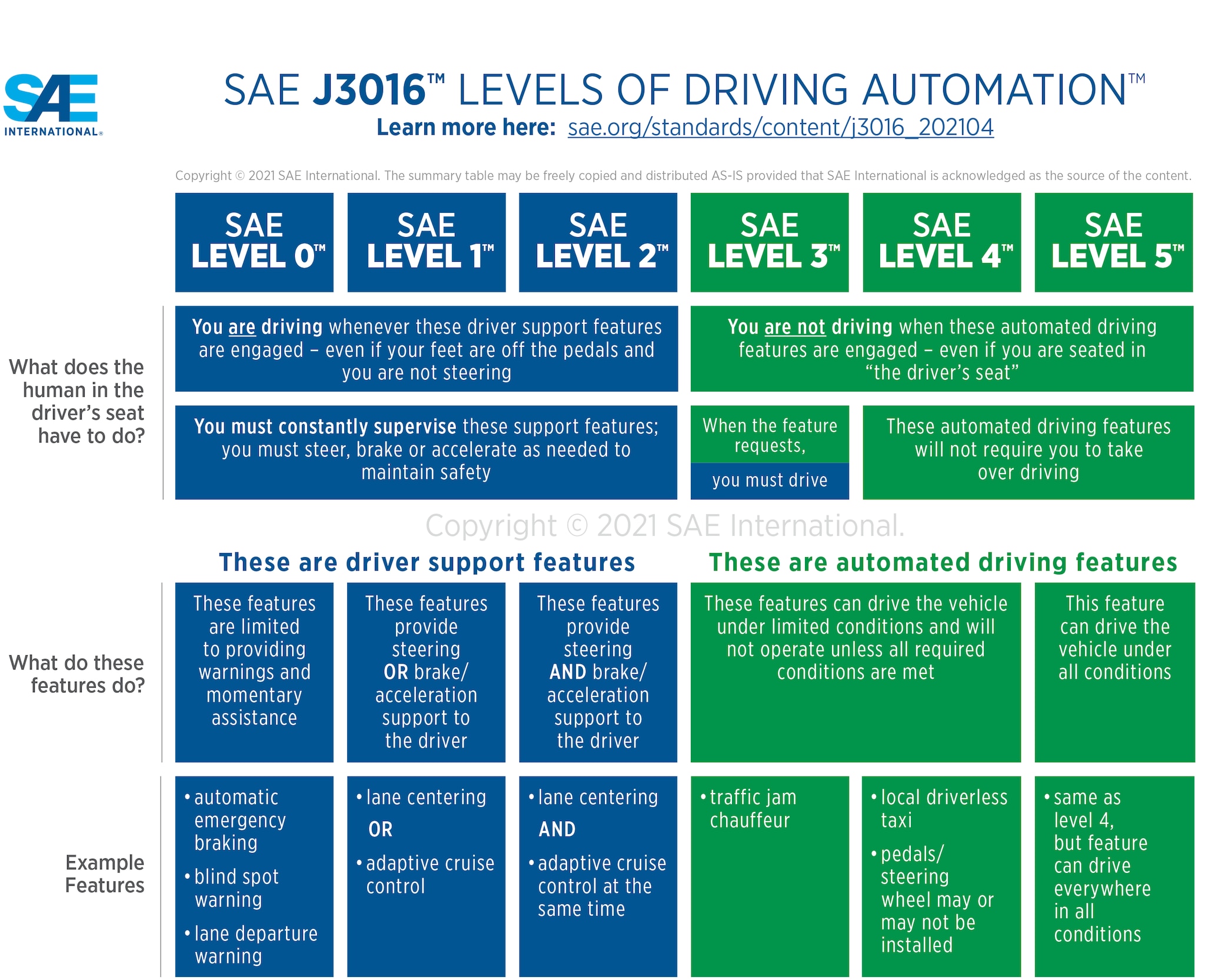What to know
Over the years, major technological advancements have improved driving safety. Although advanced driving-assist systems and full automation are changing the long-haul trucking industry, new technology presents new challenges. Experts anticipate a driver shortage by 2030.

Emerging technologies
Self-driving vehicles1
Self-driving vehicles are also known as "autonomous driving systems." Each level of automation includes additional safety measures to reduce the risk of crash or injury.
Freight transport efficiency may improve with self-driving vehicles. Truck platooning, where trucks follow each other in a freight convoy, is one example of efficiency improvement.
According to the Society of Automotive Engineers (SAE) International, there are six levels of driving automation:2

The six levels cover a range of driving automation. SAE Level 0 has no driving automation, only offering warnings and momentary assistance. Alternatively, SAE Level 5 is completely self-driving, anywhere, in all conditions.
Zero and low emission vehicles
Electric vehicles, hydrogen fuel cells, and electric hybrid vehicles reduce emissions. They may be 2 to 5 times more energy-efficient than vehicles dependent on petroleum.3
Expect to see more zero and low emission vehicle options become available to the trucking industry.
Effects of emerging technologies
Implementing new technologies could take time. Some trucking market segments may be impacted differentially:1
- Local drivers will likely be in demand because self-driving vehicles will be best suited for long stretches of highway driving1.
- Drivers who can maintain and run automated systems will also likely be in demand. Workers will need ongoing training and re-training to use these automated systems.1
We don't know yet how these new technologies will affect the risk of injuries, crashes, or driver health. We anticipate that self-driving vehicles may make long-haul driving less physically demanding.
Other Industry Challenges
Did you know?
Experts predict there will be a shortage of truck drivers for several reasons.
Retirement
Many drivers are retiring and there are not enough new drivers to take their place. The average age of a trucker is 48.
Stress, distracted driving, and fatigue
Long hours and loneliness contribute to stress.
The National Transportation Safety Board (NTSB) listed both distracted driving and fatigue on their Most Wanted list of transportation safety improvements.
Stimulant use
Substance use offenses can result in driving restriction/prohibition. A Drug and Alcohol Clearinghouse identifies drivers who are prohibited from operating a vehicle based on Department of Transportation drug and alcohol program violations.
Improve workplace flexibility
Companies and owner operators could:
• offer or incorporate enhanced worker flexibilities to allow for more time at home
• allow extra time for changing driving conditions and delays
• offer additional flexibility when scheduling freight transport
Increase pay and plan for retention
Create career paths and retention programs for new and underrepresented groups of employees.
Improve employee training
Prepare drivers for driving tasks and conditions to ensure safety and combat fatigue.
Increase recruitment
The Infrastructure and Jobs Act created an apprenticeship program to allow truck drivers under 21 to operate commercial vehicles interstate.
Engage truck cab manufacturers to redesign cabs
Truck cabs might be better designed to accommodate different-sized drivers.
- Groshen, Erica L., Susan Helper, John Paul MacDuffie, and Charles Carson. 2018. "Preparing U.S. Workers and Employers for an Autonomous Vehicle Future." Upjohn Institute Technical Report No. 19-036. Kalamazoo, MI: W.E. Upjohn Institute for Employment Research. https://doi.org/10.17848/tr19-036
- https://www.sae.org/standards/content/j3016_202104
- American Lung Association: Delivering clean air: Health Benefits of zero-emission trucks and electricity: A zeroing in on healthy air report. Delivering Clean Air: Health Benefits of Zero-Emission Trucks (lung.org)
- Economics Department, American Trucking Associations, Inc.. Driver Shortage Update 2021. October 25, 2021. ATA Driver Shortage Report 2021 Executive Summary.FINAL_.pdf (trucking.org)
